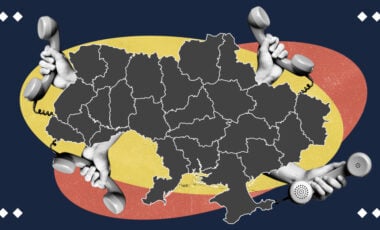Ukraine's armed forces may receive permission to strike Russian rear areas with Western weapons – ISW

Photo: twitter.com - Parazyth
According to analysts at the Institute for the Study of War (ISW), the limited authorization to target the Russian Federation using weapons provided by the US has decreased the enemy's secure territory by 16 percent. There are ongoing discussions about potentially permitting unrestricted attacks.
The Institute for the Study of War (ISW) reported this.
Limited changes in the policy of the Biden administration, which allowed Ukraine to use US-provided weapons to attack some Russian military facilities in a small area of the territory of the Russian Federation, which is only 16 percent.
The US is restricting the use of weapons from Ukraine to launch more extensive attacks on Russian soil within the range of ATACMS missiles provided to Ukraine.
"US policy still protects the vast majority of Russia's operational rear and deep rear, and US policy prohibits Ukraine from using ATACMS anywhere in Russia," the report said.
Experts point out that the US authorization has actually created a fairly large area in which the Defense Forces have the right to strike with Western weapons. At the same time, some restrictions on the types of American weapons have narrowed the ability of the Ukrainian Armed Forces to strike in areas far from the border with Ukraine, which Russia uses to cover its own combat forces, administrative bodies, logistics, and rear support.
Analysts point out that the US permission to strike Russian territory with American weapons to hit some military facilities on a small section of the Ukrainian-Russian border has reduced the size of Russian land "intact" territory by a maximum of 16%.
However, US policy allows the aggressor to retain at least 84% of ground defense since Ukraine is prohibited from using anti-aircraft missile systems on the rest of Russia's territory, which protects the vast majority of its operational and deep rear.
ISW analysts assume that Ukraine's armed forces can hit all legitimate military targets within the range of multiple rocket launchers in:
- Belgorod,
- Kursk,
- Bryansk regions.
However, it is not a proven fact that the Defense Forces have been permitted to do so, according to the report. Senior officials from the United States have granted Ukraine the ability to launch counter-battery missiles into Russian territory but have specified that these strikes are only allowed within a particular geographical area near the border with the Kharkiv region.
In fact, the armed forces have the right to strike Russian military facilities "located directly along the Ukrainian border." Instead, the Defense Forces cannot strike Russian military targets further in the rear or in other areas of the Kursk and Bryansk regions, which are also within the range of the MLRS.
Statements by American officials also indicate that Ukrainian forces may be limited in their ability to strike Russian military targets that do not actively participate in ground attacks and strikes against Ukraine.
Thus, says the ISW, the reduction of the area of safe space in Russia may be less than 16 percent.

US allows Ukraine to shoot down enemy aircraft on Russian soil without restrictions – Kirby
ISW key findings as of June 9:
- The Biden Administration's limited policy change permitting Ukraine to use US-provided weapons to strike some Russian military targets in a small area within Russian territory has reduced the size of Russia's ground sanctuary by only 16 percent at most. US policy still preserves at least 84 percent of Russia's ground sanctuary—territory within range of Ukrainian ATACMS.
- Likely Ukrainian forces struck a Russian Su-57 fighter aircraft at the Akhtubinsk Airfield in the Astrakhan region between June 7 and 8.
- Ukrainian forces may have struck a sizeable Russian landing ship or patrol boat in Yeysk, Krasnodar Krai, on the night of June 8 to 9.
- The Kremlin's concerted effort to remove and arrest senior Russian defense officials may be extending to civilian regional administration officials.
- The pro-Kremlin Moldovan Victory opposition electoral bloc held its second congress in Moscow on June 9 following a series of meetings between pro-Kremlin Moldovan opposition politicians and Russian officials from June 6 to 9.
- Former pro-Russian Moldovan president and current head of the Moldovan Socialist Party Igor Dodon gave interviews to Russian state news agencies TASS and RIA Novosti on June 9 in which he promoted several known Kremlin narratives targeting the current Moldovan government – many of which Moldovan opposition politicians also promoted at the Victory bloc congress.
- The Kremlin will likely try to exploit its ties to Dodon as part of its broader efforts to destabilize Moldovan democracy and influence the Moldovan government.
- Russian forces recently advanced near Kupiansk, Siversk, Chasiv Yar, Avdiivka, and Donetsk City.
- Russian officials continue efforts to coerce migrants into military service.

У росії здійснено замах на купʼянського мера-колаборанта Мацегору: зрадник у критичному стані

Russia installs eight new defensive barges to protect Kerch bridge from Ukrainian attacks — British intelligence

US ready to offer $50 bln loan to Ukraine, conditioned on EU extending indefinite sanctions against Russia




















































